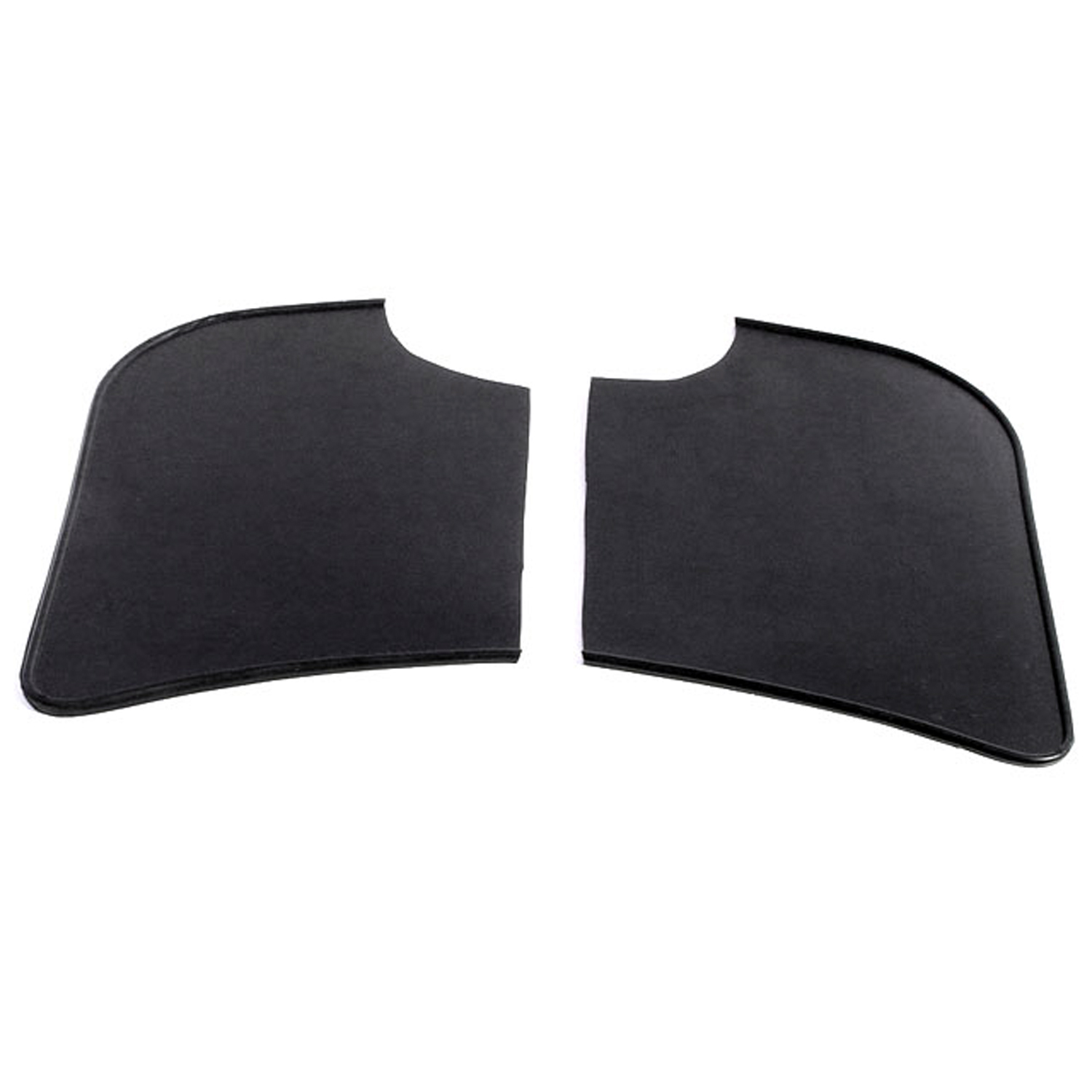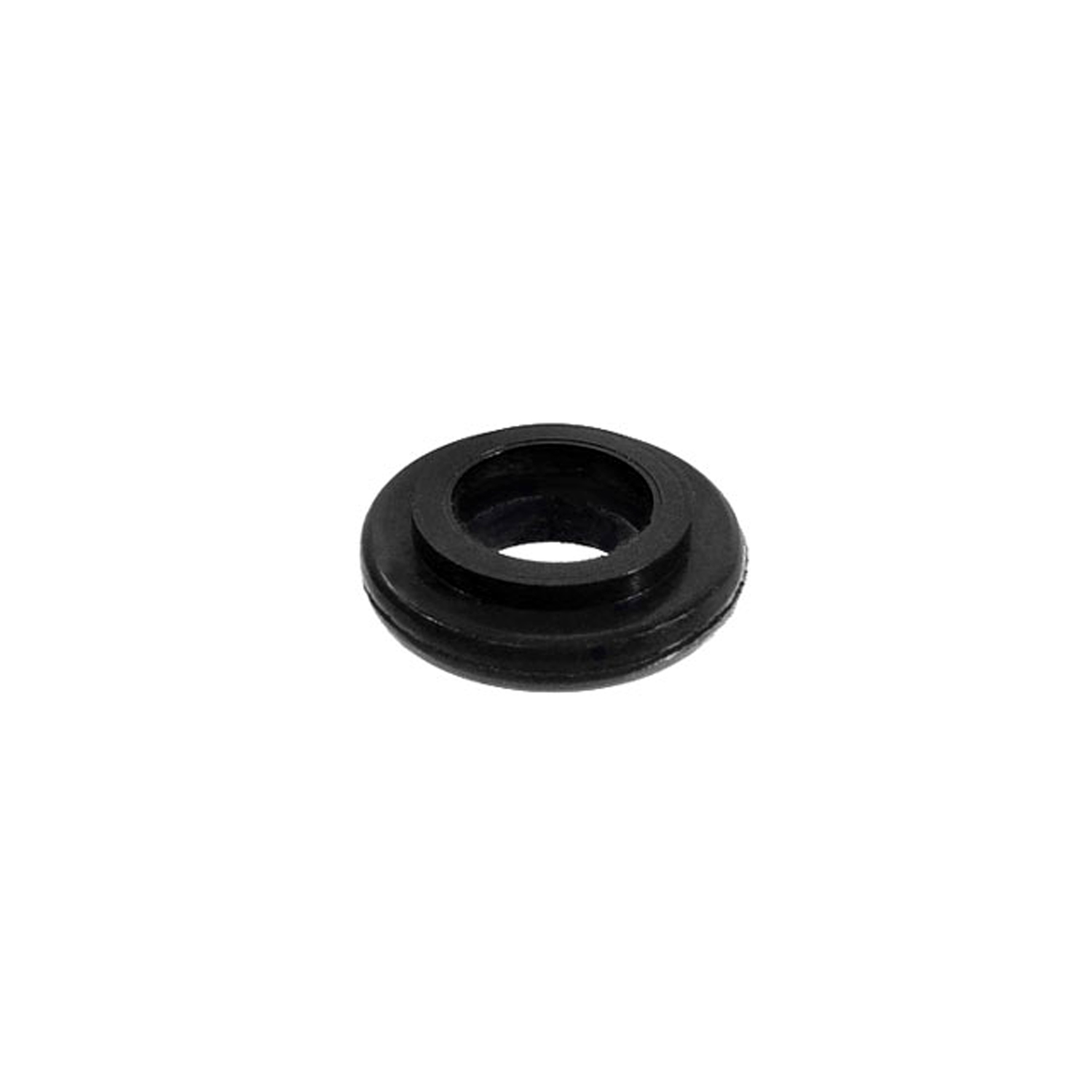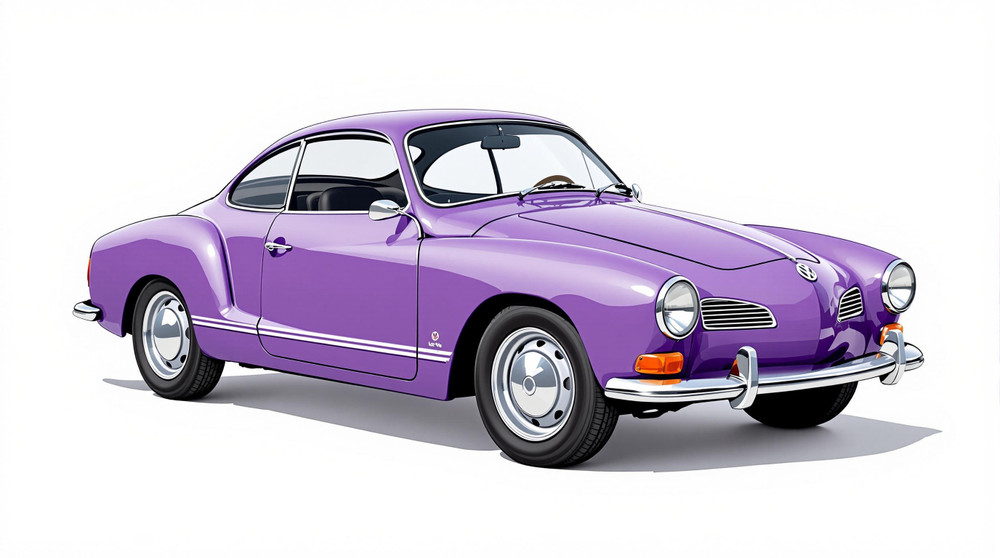Image of 1970 Volkswagen Karmann Ghia, Note: These illustrations use artistic license and may differ from actual historical models.
Performance Metrics
Fundamental Metrics
Emotional Appeal
MMP Rating
| Engine Specifications | |
|---|---|
| Engine: | Air-cooled, rear-mounted, flat-four engine |
| Displacement: | 1.6L |
| Horsepower: | 60 hp |
| Torque: | 81 lb-ft |
| Compression Ratio: | 7.7:1 |
| Ignition System: | Distributor ignition system |
| Cooling System: | Air-cooled |
| Performance Specifications | |
| 0-60 Time: | 15 seconds |
| 1/4 Mile Time: | 20 seconds |
| Top Speed: | 90 mph |
| Transmission and Drive | |
| Drive Type: | Rear-wheel drive |
| Transmission Type: | 4-speed manual |
| Fuel and Efficiency | |
| Fuel System Type: | Carburetor |
| MPG: | 25-30 mpg |
| Dimensions and Brakes | |
| Brakes: | Front disc brakes, rear drum brakes |
| Wheelbase: | 94.5 inches |
| Weight: | 1,874 lbs |
Note: Specifications for classic cars are given to the best of our ability, considering the limited and variant data available.
1970 Volkswagen Karmann Ghia: A Timeless Fusion of Style and Simplicity
The 1970 Volkswagen Karmann Ghia is an emblem of automotive elegance that transcends its era. Born from a collaboration between the German automaker Volkswagen and the Italian coachbuilder Ghia, with assembly by the German firm Karmann, this vehicle is a harmonious blend of international design and engineering prowess. It emerged as a stylish alternative to the utilitarian Volkswagen Beetle, capturing hearts with its sleek lines and charming personality. A notable moment in its history is the Karmann Ghia's cameo in television and film, which cemented its status as a cultural icon.
Design and Innovation
The Karmann Ghia's exterior styling is a testament to timeless design, featuring a low-slung silhouette with flowing curves that command attention. The interior is a study in simplicity and functionality, with an emphasis on driver ergonomics. Materials such as vinyl and hard plastics were typical for the era, yet they were crafted with an eye for detail that gave the cabin an air of understated sophistication. Technological features were modest by today's standards but included advancements like an improved electrical system over earlier models. Color options ranged from vibrant tones to more subdued hues, with choices like Cherry Red and Pearl White being particularly popular among enthusiasts. The coupe body style remains the most iconic, though the convertible variant holds a special charm for those who appreciate open-air motoring.
Historical Significance
The Karmann Ghia stood out in the 1970s automotive landscape for its design-first approach, eschewing raw power for aesthetic appeal. Its impact on automotive design is evident in how it demonstrated that mass-market vehicles could possess the grace typically reserved for luxury marques. The car's lasting influence is seen in subsequent generations of vehicles that prioritize design harmony alongside mechanical function.
Performance and Handling
Underneath its sculpted exterior, the 1970 Karmann Ghia offered modest performance credentials. With a top speed hovering around 90 mph and an acceleration from 0-60 mph achievable in about 18 seconds, it was no speed demon but provided adequate performance for its time. Handling was characterized by a smooth ride quality and predictable dynamics, thanks to its Beetle-derived chassis. Drivers often recount the distinct air-cooled engine note and tactile feedback through the thin-rimmed steering wheel as part of the car's unique driving experience.
Ownership Experience
The Karmann Ghia was versatile enough to serve as a daily driver or a weekend showpiece. Its reliability mirrored that of the Beetle, making maintenance straightforward for those familiar with air-cooled Volkswagens. Parts availability remains good due to shared components with other VW models, ensuring that ownership is as enjoyable now as it was decades ago.
Fun Facts
This stylish coupe has been owned by celebrities and featured in various films and TV shows, adding to its cool factor. While not known for breaking speed records, it has held a place in people's hearts for its design and charm rather than outright performance. Criticisms often focus on its modest power output but are usually offset by praise for its aesthetics and driving character.
Collector's Information
As of today, values for well-preserved Karmann Ghias can range significantly based on condition, originality, and history. With estimates suggesting that over 445,000 coupes were produced throughout the model's lifespan, they are relatively rare but not exceedingly so. Price trends have shown appreciation over time as enthusiasts seek out these iconic classics for their collections.
Conclusion
The 1970 Volkswagen Karmann Ghia stands as a testament to what happens when form meets function in perfect harmony. It may not have been the fastest or most technologically advanced car of its time, but it captured something perhaps more enduring: an aesthetic appeal that continues to resonate with collectors and classic car aficionados alike.
1970 Volkswagen Karmann Ghia Catalog of Parts
 1970 Volkswagen Karmann Ghia Gravel Shields. Molded flat without metal backing plates-FS 40Gravel Shields. Molded flat without metal backing plates. Apply with contact cement. 7-5/8" long X 5-5/8" wide at top. Pair
1970 Volkswagen Karmann Ghia Gravel Shields. Molded flat without metal backing plates-FS 40Gravel Shields. Molded flat without metal backing plates. Apply with contact cement. 7-5/8" long X 5-5/8" wide at top. Pair 1970 Volkswagen Karmann Ghia Oil Cooler Seal. 7/16" I.D., 7/8" O.D. Each-RP 8-BOil Cooler Seal. 7/16" I.D., 7/8" O.D. Each
1970 Volkswagen Karmann Ghia Oil Cooler Seal. 7/16" I.D., 7/8" O.D. Each-RP 8-BOil Cooler Seal. 7/16" I.D., 7/8" O.D. EachWhy Choose Metro?
For over 100 years, Metro Moulded Parts has been the pinnacle of quality in classic car restoration parts. Our commitment to precision and authenticity in every component ensures a perfect fit and an OEM-level appearance.
- Expert Craftsmanship & Quality: Each part is a testament to our dedication to reliability and perfection, crafted from original designs and thoroughly tested.
- Advanced Technology: We use cutting-edge techniques to create flawless, long-lasting parts that surpass others in performance.
- SuperSoft Sponge – The Ultimate Door Seal: Not only are our door seals 30% softer than competitors', but they're also guaranteed to never leak. They effectively reduce wind and road noise, enhancing your classic car's comfort and driving experience.
- Proudly American: Our parts are a product of American craftsmanship, made in the USA with a spirit of excellence and heritage.
- Unrivaled Warranty: We back our products with a 30-year industry-leading warranty, a testament to our confidence in their quality.
Join us in preserving the legacy of classic cars with parts that are crafted for perfection, not just made.

